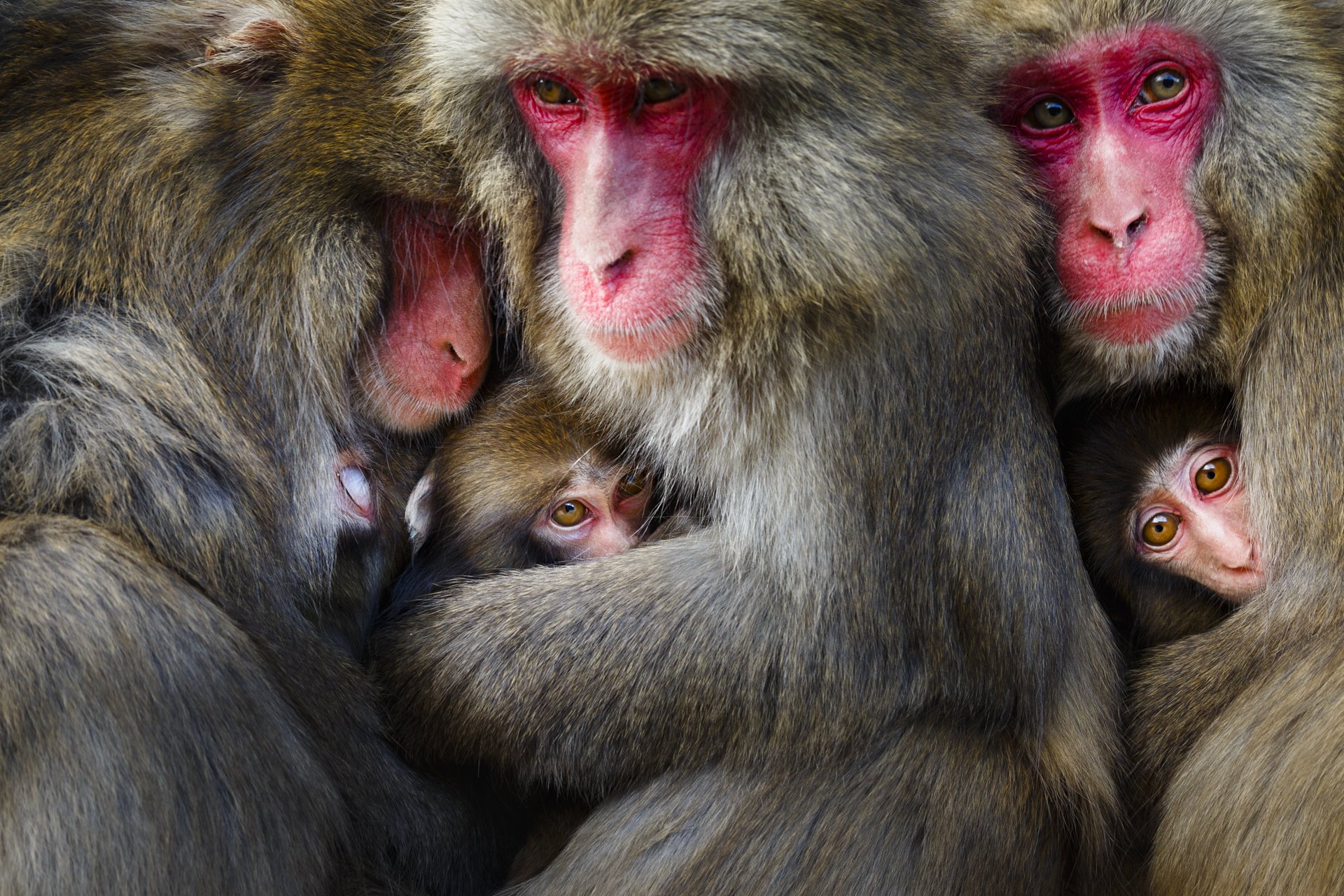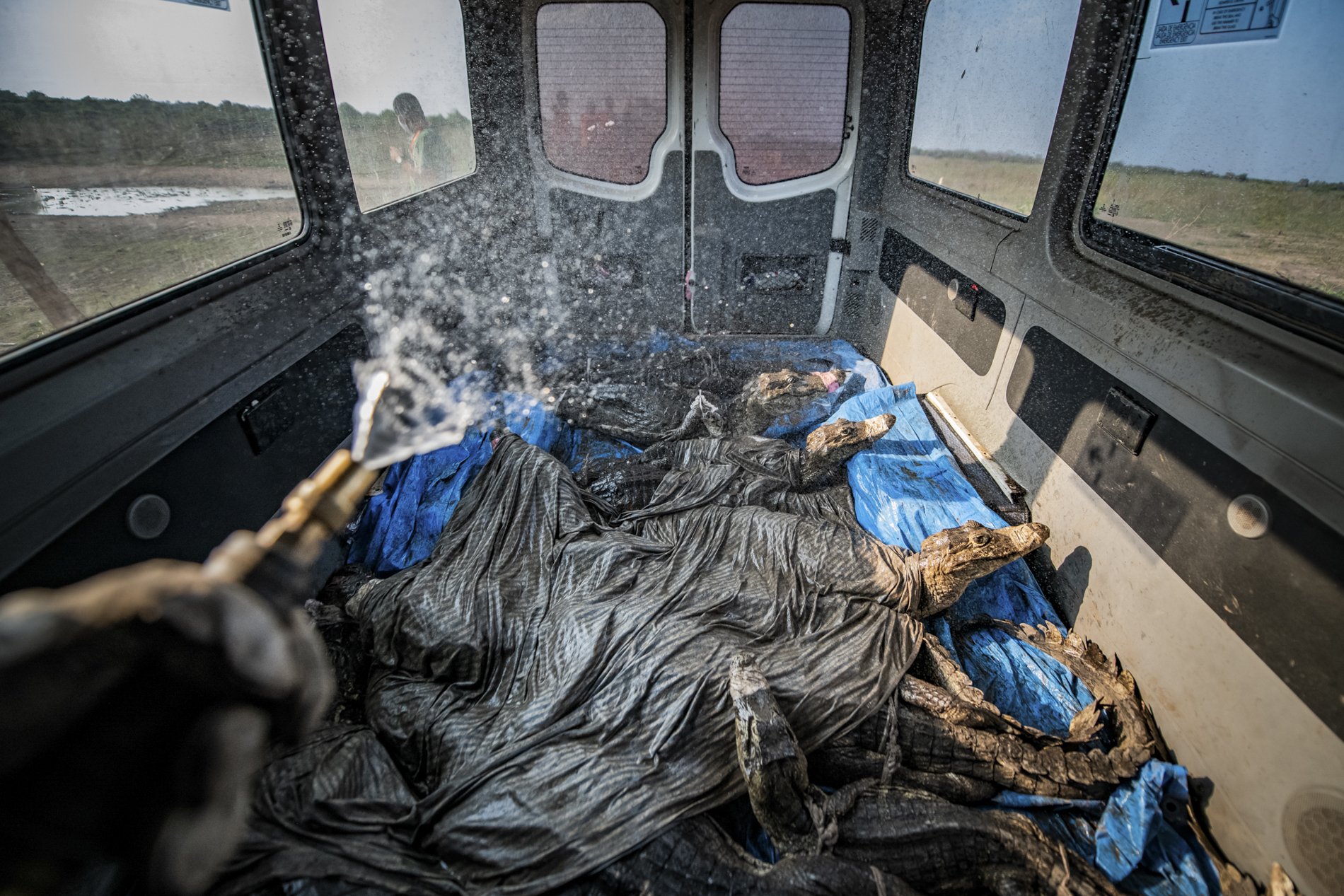We are absolutely delighted to announce our 2022 winners. The standard, as always, has been exceptional. We are also thrilled to hand the title of World Nature Photographer of the Year to Jens Cullmann for his image ‘Danger in the mud.’ Many congratulations to all our winners!
Animal portraits
© Jens Cullmann
JENS CULLMANN, GERMANY - Gold WINNer and grand prize of WORLD NATURE PHOTOGRAPHER OF THE YEAR
This photograph is the result of my staking out the largest pool in Mana Pools National Park, Zimbabwe, at a time when an extended drought had reduced the pool to rapidly-drying mud. I had to be very careful not to disturb the crocodile, even though it was buried in dry mud. They will launch themselves with tremendous speed and power at any animal foolish enough to come too close.
During the dry season, temperatures can reach 45 degrees Celsius and crocodiles will attempt to reduce their body temperature by burying themselves in mud. A giant crocodile such as this one could survive submerged for month without eating, by living off its fat reserves. This is a process known as aestivation.
© Mike Darter
© Andre Johnson
silver: MIKE DARTER, USA
bronze: ANDRE JOHNSON, USA
Behaviour - Mammals
© Hidetoshi Ogata
gold: HIDETOSHI OGATA, JAPAN
Japanese macaques on Awaji Island in Japan form huddles consisting of many individual monkeys, sometimes reaching more than thirty. In other places, huddles are usually made up of just a few, rarely more than ten. Cuddling and grooming are among several possible reasons for making a huddle. It begins with the mother and baby cuddling. Other females and young males then join in, as well as other cuddling groups. This photo captures a rare moment during the lactation season when three pairs of monkeys have formed a huddle after grooming. Most Awaji monkeys are non-aggressive and when they are raising their babies, mothers create individual communities that have no social hierarchies.
© Eduardo Feldman
silver: EDUARDO FELDMAN, ISRAEL
© Staffan Widstrand
bronze: staffan widstrand, Sweden
Behaviour - Amphibians and reptiles
© Norihiro Ikuma
GOLD: Norihiro ikuma, japan
The ‘Japanese stream toad’ lives deep in the mountains of Owase in Mie, Japan and only comes down from the mountains to the river when it is time to spawn.
SILVER: ASHOK BEHERA, INDIA
bronze: SUZANNE TYLANDER, USA
Behaviour - Birds
© Charles Schmidt
Gold: CHARLES SCHMIDT, USA
A Male Hooded Merganser takes flight headed directly at me. I had been watching a pair of Hooded Mergansers in anticipation of them taking off. Ducks will often begin swimming more quickly when they are preparing to fly. I saw that they began to swim more quickly and thus was prepared to catch them taking off. I was lucky that they headed directly towards me!
Behaviour - Invertebrates
© Javier Herranz Casellas
GOLD: JAVIER HERRANZ CASELLAS, SPAIN
A red crab (Grapsus adscensionis) appears surrounded by a thin curtain of water produced by the waves of the sea when it hits the rocks in which it looks for the small crustaceans and plants on which it feeds. La Gomera Island, Spain.
© Takuya Ishiguro
SILVER: TAKUYA ISHIGURo, JAPAN
© Sitaram Raul
BRONZE: SITARAM RAUl, INDIA
Nature art
© Tom Shlesinger
GOLD: tom shlesinger, israel
Corals are animals, and this is how they reproduce and create new generations of baby corals. Usually, at the exact same time, thousands of corals of a given species along hundreds of kilometres of the reef reproduce by spawning egg-and-sperm bundles altogether into the open sea. These bundles will be carried away by the currents, mixing in the water, until they finally encounter a match—a sperm will fertilise an egg and new life will be created. Yet catching coral spawning is tricky business as it usually happens only once a year in a certain month of the year, on a specific night of the month, and at a certain hour of the night for a very short time window of only few minutes. In this photo, a close up of a branching coral spawn pinkish egg-and-sperm bundles.
People and nature
© Virgil Reglioni
gold: virgil reglioni, norway
This is how it feels to be inside the glacier's guts. Not many people would even dare to go in there, where it is dark, deep, cold, loud, and wet. And that is the whole purpose of this photograph; pushing your limits to capture what only a few people will ever experience at night. Abseiling down felt incredible, as the more we penetrated into this dark monster, the more the fear rises up. The setup was simply impressive, and I did feel amazing just being hanging into that moulin with about 30 metres of dark void under my feet and my hanging tripod in the air.
© Alex Pansier
© Evan Friedman
SILVER: alex pansier, netherlands BRONZE: evan friedman, usa
Plants and fungi
©Julie Kenny
GOLD: julie kenny, australia
The tree is seen as a sacred symbol, which carries significant meanings in both religious and spiritual philosophies. From above the surrounding sheep tracks combined with the fallen tree reminded me of the Tree of Life. While the aerial perspective focuses on the earth, you can see the pooled water in the sheep tracks reflecting hints of blue from the sky. While this represents many different things, for me it communicates the interconnection of all things, beginnings and endings, the cycling of life.
© Mr. Endy.
silver: Mr. Endy., SINGAPORE
© Antonio Coelho
bronze: antonio coelho, portugal
Underwater
© Adriano Morettin
gold: adriano morettin, italy
A couple of Harlequin shrimps Hymanocera picta photographed with the snoot on the blue seastar Linkia laevigata in Lembeh strait, Indonesia.
© Talia Greis
SILVER: talia greis, australia
©Juho Karhu
bronze: juHo karhu, finland
Planet Earth’s landscapes and environments
© Jake Mosher
gold: jake mosher, usa
On June 17th, 2021, I hiked, snowshoed, and climbed to the 11,000-foot summit of Wyoming's Table Mountain to photograph the Milky Way over Grand Teton Peak. While these iconic mountains have been photographed tens of thousands of times, I wanted to show an entirely unique view of them. I was treated to one of the most spectacular displays of airglow that I've ever seen - similar to the aurora and created by photo-charged particles, but spanning much of the horizon.
© Beatrice Wong
silver: beatrice wong, hong kong
© Miki Spitzer
bronze: miki spitzer, israel
Black and white
© Ernoult Alain
GOLD: ernoult alain, France
The Lesser Antillean Iguana, photographed on Grenada Island (Windward Islands, Caribbean, West Indies).
© Dr Artur Stankiewicz
silver: dr artur stankiewicz, poland
© Jules Oldroyd
bronze: jules oldroyd, uk
Animals in their habitat
© Sascha Fonseca
gold: sascha fonseca, united arab emirates
A beautiful snow leopard triggers my camera trap high up in the Indian Himalayas. I captured this image during a 3-year DSLR camera trap project in the Ladakh region in northern India. The mystery surrounding the snow leopard always fascinated me. They are some of the most difficult large cats to photograph in the wild. Not only because of their incredible stealth, but also because of the remote environment they live in.
© Thomas Vijayan
silver: thomas vijayan, canada
© Adam Horvath
bronze: ADAM HORVATH, hungary
Urban wildlife
© Vladislav Tasev
gold: vladislav tasev, uk
The common kestrel (Falco tinnunculus). A male kestrel perched in its nest, dilapidated old, tall and rusty street lamps that have become the bird's home. A place I wouldn't expect to see her. I took the picture at sunset to see the rust, the lamps and the bird in natural light. The photo was taken in the town of Stara Zagora near the Thracian University, in an abandoned parking lot near a small forest.
© Partha Roy
SILVER: partha roy, singapore
© Nitin Michael
BRONZE: nitin michael, United arab emirates
Nature photojournalism
©Nicolas Remy
GOLD: Nicolas remy, australia
An Australian fur seal shows a bad injury from a boat propeller. Shot in Port Kembla, NSW, Australia.
© Fernando Faciole
SILVER: Fernando faciole, brazil
©Loren Kreisle
BRONZE: Loren Kreisle, USA
To see last year’s winners, click here.










































